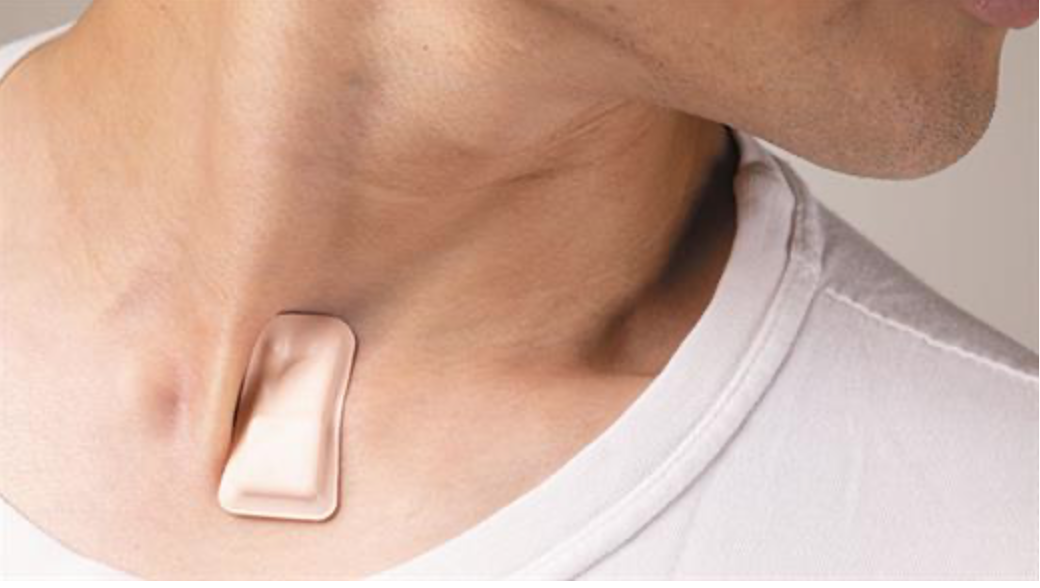Northwestern and University of Illinois researchers have partnered to combine a COVID symptom-detecting wearable with a method to organize and analyze the massive data sets required to accurately show disease progression. The technology will be used in hospitals and nursing homes, to monitor both patients and healthcare workers, to identify contagion early in an effort to reduce the risk of spread.
Building on his stroke-monitoring wearable, John Rogers at Northwestern uses a patch that sits at the base of the throat and continuously monitors cough, heart and respiratory sounds. The University of Illionois algorithm, developed by Naresh Shanbhag, will allow these parameters to be tracked quantitatively.
The goal is to extract detailed, and sometimes subtle, parameters from the raw data, which provide insights into disease progression. This includes analyzing cough intensity, whether it is wet or dry, and whether a patient swallows afterward,
In addition to hospital patients, the team was able to monitor a nurse before, during, and after she had contracted the virus. The data collected, in combination with the nurse’s detailed notes throughout her illness, allowed the team to pick up heart rate spikes and changes in coughing activity that would have gone undetected in standard non-ICU hospital care.
Data is transmitted from the patch to a phone or a tablet, and then to the cloud, where it is processed. The group is attempting to move the processing directly to the patch and device to save energy consumption, and improve security and privacy.
According to Shanbhag: “We will acquire data for both ill and healthy patients, and learn the characteristics of the data by developing COVID-19 specific, low-complexity machine learning algorithms. We’ll then use the learned models for predicting whether a patient is ill or not and how the disease will progress over time for new patients or individuals.”
